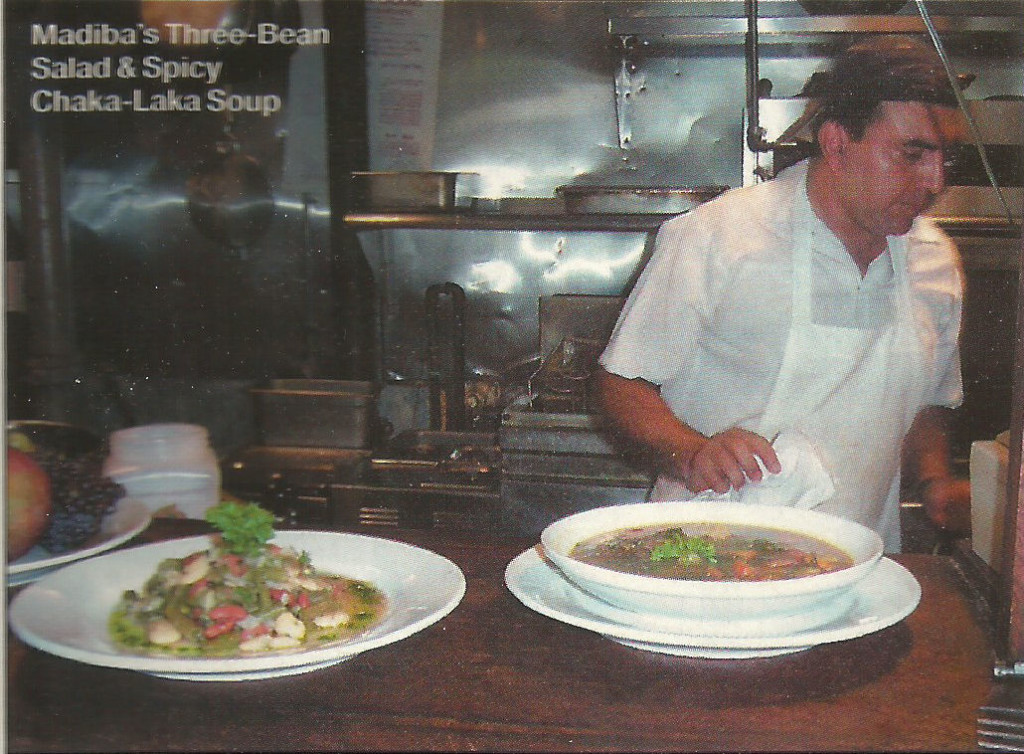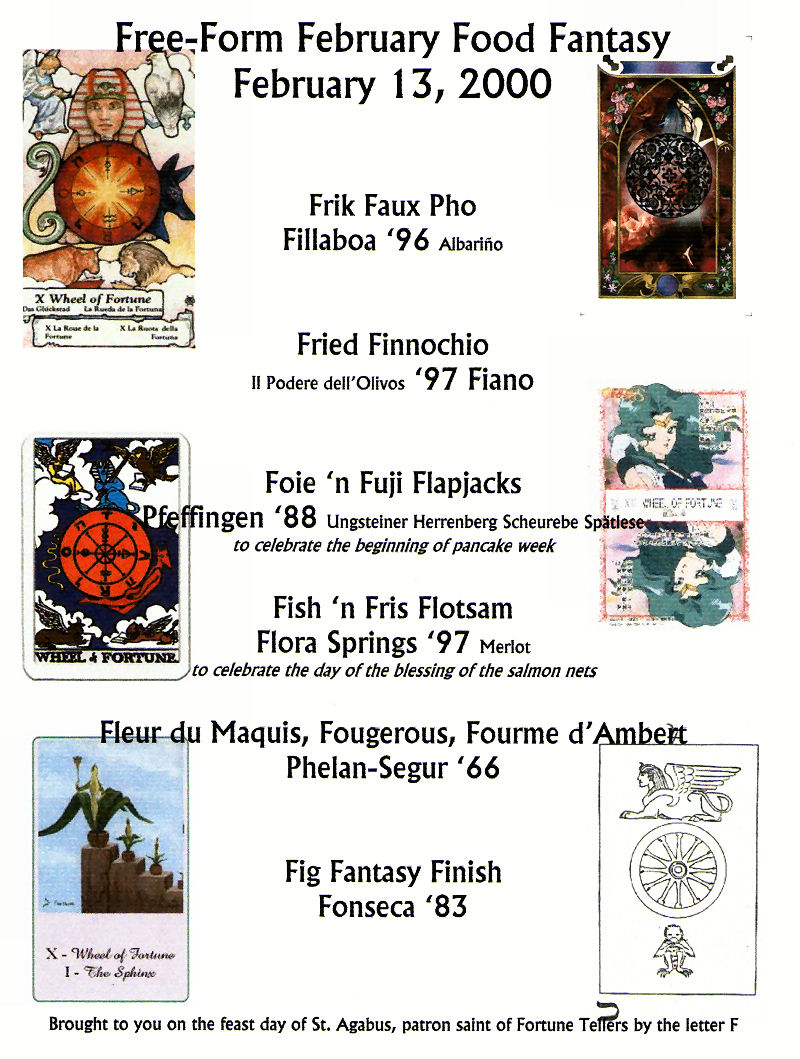Judges – Repeated Failure
Following in a now familiar pattern, the Israelites, post-Joshua, continue on with conquering and integrating into the Promised Land. While doing so, they apparently will once again lose faith, despite having just sworn up and down to Joshua that they won’t. God will be pissed and threaten to destroy them. Someone will intercede and talk him down. He’ll pick a new champion. Rinse and repeat. In this era, the champions will be the biblical judges, as the Israelites struggle to found a politically based kingdom.
- Despite the litany of conquered towns and territories, there was an entire region of the Promised Land still unconquered after Joshua’s death. So, it falls to the various tribes to go and conquere the various cultures that exist in, around, and north of Jerusalem. Most of them, led by the hand and favor of God, succeed, killing of tens of thousands of people who lived in the various regions. A few of the tribes decide it’s better just to live in harmony with the existing peoples. God, of course, favors the conquering types.
- God sends an angel to one of the tribes that decided to negotiate, integrate, and/or assimilate, to remind them that they swore not to do that. In retaliation for their straying from the path, God tells them that they’ll be oppressed by their newfound neighbors. A generational cycle begins, with the Jews being oppressed, then repenting, God sending a champion to help them take back the territory and destroy the local culture, and then the next generation falling into old ways again. Over and over until God says, I’m not helping anymore.
- We continue this cycle of disappointing God by assimilating and adopting local worship and behavior customs. Over and over. And why? Because succeeding generations only hear about history as a story, they didn’t experience it and don’t learn from it. A focus on the Benjamites, who have integrated into the kingdom of Moab, led by King Eglon. God sends a champion, Ehud, who, we are informed, is left-handed, and conceals a dagger on the opposite side of his body from where he might be searched. He gains an audience with Eglon. After presenting gifts to Eglon, he asserts that he has some privileged, secret info, and Eglon dismisses his courtiers. Alone, Ehud stabs Eglon to death, ripping open his belly. He then cleans up, locks up, and leaves, making a clean getaway before his act is discovered. With Eglon out of the way, Ehud leads the Israelites in the slaughter of 10,000 Moabites, conquering yet another small city-state.
- Next round. Ehud’s dead. Now another group of Jews are subject to the rule of Sisera, another Canaanite leader. Twenty years go by, and the judge Deborah calls Barak, the commander of the Israelite forces and announces a 10,000 man march on Sisera’s forces. Barak hems and haws and finally says he’ll do it if she’ll accompany him. She says “cool, but all credit goes to women!” They march, kill Sisera’s troops. Sisera escapes to a nearby city where Jael, wife of Heber, a Jew who kept the faith during the past decades, greets him. Not knowing who she is, he asks her to set him up in a tent, and make sure no one knows he’s there. She agrees, waits until he’s asleep, and then takes a tent stake and a mallet and drives the stake through his temple, nailing him to the ground. All credit, indeed, to the women.
- Pleased with themselves, Deborah & Barak, commander of the troops, break into song, recounting the battle and extolling the glory of fighting on behalf of, and worshipping God. At the end of the song, the Israelites then have 40 years of peace and harmony. Time jump!
- Another group of Jews has abandoned God and started worshipping Baal. So God lets the Midianites drive them from their homes, forcing them to live in the hills, and further, the Midianites keep raiding their livestock and produce. The Jews cry out to God for help. God responds that they abandoned him first, so what did they expect? But he sends an angel, who appears in front of Gideon, son of Joash, a local farmer. The angel tells Gideon that he will be the new messenger and champion of God. Being your average farmboy, Gideon is skeptical. He notes that he’s the youngest of an insignificant family. And, he wants some proof, so he asks the angel to wait. He then prepares a meal and presents it to the angel, who tells him to place it on a nearby rock. The angel points his staff at the rock which bursts into flame. The meal is instantly consumed. Gideon builds an altar to God on the spot. God tells him to go and tear down the community’s altar to Baal and replace it with one to him. Afraid, Gideon and some friends do so in the middle of the night, and then sacrifice a bull. Next day the townspeople are pissed and want to kill Gideon, but his dad, Joash, convinces them that if Baal is upset, he can come for Gideon himself. Then Gideon blows a horn that he had lying around and rallies all the nearby Jewish communities to battle. But he’s still skeptical, so he asks the angel for another bit of proof, placing a piece of cloth on the ground and asserting that if God is truly with him, in the morning the cloth will be dry while the surrounding ground will be covered in dew. Next morning, that’s the case.
- Gideon and the troops are ready. They number 32k. God says to Gideon, “Woah, that’s too many. If you conquer the Midianites with 32k troops, y’all are going to take credit for the win. Ask for volunteers to go home and not fight.” Gideon does, and 22k choose to leave. God says to Gideon, “Still too many. Take them to the river and let them drink water, I’ll figure it out.” They go to the river, and while 300 lie down and lap the water like dogs, the others go to their knees and scoop water. God tells him to send the kneelers home. He does. He then tells Gideon to sneak into the Midianite camp and listen in on conversations. Gideon does, and overhears a dream about the tent camp being overturned. It gives him an idea. Don’t ask me how. He goes back to his 300 and equips them with horns and jars with torches in them. He splits them up, they approach the camp on three sides, then they all blow their horns, shout battle cries, and smash their jars with torches in them. This, apparently, causes the Midianites to lose their minds, and they all run away to the open side. Gideon’s troops pursue. They kill as many as they can as they pursue, and in the end, capture the two Midianite generals, cutting off their heads and bringing those back to Gideon.
- Gideon and his 300 men are still in pursuit of the remaining 10k enemy troops the two Midianite kings. They’ve already, with God’s help, killed 120k enemies. As they pass through different towns, he asks locals for sustenance for his men, and each time is refused. The general response is, “why should we feed your men if you haven’t captured and killed those kings?” Gideon swears revenge. In the end, he and his men kill the remaining enemy troops and capture and kill the kings. On his way back, they destroy the towns that mocked them. And, kill most of the inhabitants. Segue, much pleased with himself, Gideon retires, lives out 40 more years of life with multiple wives and concubines, fathering 70 children, including Abimelech, son of one of the concubines, who I gather we’ll get back to. Gideon dies. The people go back to worshipping Baal. I told you this was going to be a lot of “rinse and repeat”.
- Back to Abimelech, son of Gideon and a concubine. He’s pissed off that dad’s family doesn’t recognize him, so he goes to mom’s family and gets them to follow him, and kill off all 70 of his half brothers, except the youngest, Jotham, who hides. Then Abimelech sets himself up as local king over his parents’ tribes, and he rules for three years, until Jotham organizes an insurrection. Fast forward, various battles, lots of pursuing and killing, Abimelech setting fire to a people-filled tower and burning them alive. In a last ditch effort, a woman in the tower drops a millstone on Abimelech’s head, nearly killing him. Dying, he calls his adjutant and asks to be put to death by stabbing, so that no one knows he was killed by a mere woman. Abimelech is dead. Battle over. Everyone goes home.
- After Abimelech, Tola arises and leads the Jewish people for 23 years. Then Jair takes over and leads for another 22. But somewhere in there, the people start to revert to their old ways, or perhaps simply assimilating with their neighbors, and begin to worship Baal. God’s had enough, and lets the Philistines and Ammonites oppress the Jews, for 18 years. They cry out for his help, lamenting that they screwed up. Yet again. But he’s having none of it. Reminds them how many times he’s saved them from enemies. Suggests they ask the other gods for help this time and see how that goes. Smartly, I’m going to assume, they destroy all the altars and idols to Baal and other gods. They muster their troops, and the military leaders agree that whoever stands up successfully to the Philistines and Ammonites will be the next leader over their people.
- Jephthah, son of Gilead and a prostitute, is thrown out of the family house by Gilead’s “real” sons. But now that there’s trouble brewing with the Amonites, the elders think he’d be a good commander of the troops, as he’s a trained warrior. They ask him to come back. He’s like, “You kicked me to the curb, why should I help you?” They’re like, “Help us and we’ll make you commander over all the troops.” He agrees, and he sends messages to the enemy kings, asking why they’re massing to attack. One and all reply, “Dude, you guys took our lands.” He responds, “We didn’t take them, we sent you messages asking to let us pass, you refused, so God conquered you with our help and told us we could have the land. Wouldn’t you keep the spoils from anything your god (Chemosh) gave you?”They’re like, “Prepare for war dude.” Jephthah vows to God that if God helps him conquer all the enemies, when he gets home, he’ll offer up “whatever” first approaches him as a burnt offering. God helps him conquer all, Jephthah heads home. But, instead of an animal, his only daughter is first to approach him. They talk, she’s like, “Well, you promised, so, hey, give me a couple of months to go hang with some friends, lament the loss of my future, and then I’ll be back and you can burn me on the altar.” So, he burnt her alive. Dude, really? You couldn’t ask God for a renogtiation?
- The Ephraimites, another one of the Jewish tribes, approach Jephthah, pissed off that he fought against the Amonites without consulting or inviting them to fight alongside him. He claims he sent them missives, they claim not. This is apparently really offensive. Because, the Ephraimites attack Jephthah and the folk of Gilead, simply for not having been asked to participate. The Gilead folk massacre them for not being able to pronounce shibboleth – 42k of them die. Jephthah leads for another six years, then dies. He is followed by Ibzan, who leads for seven years, managing to sire 30 sons during that time, I’m assuming with more than one wife and/or concubine. Then Elon (can we use that name?) leads for ten years. Then Abdon, for eight years, fathering a whopping 40 sons! And so, that’s 31 years of relative peace, and the people following God’s rules, which, as this page closes, you just know is a setup for another failure, right?Side note: There’s a whole lotta killing in the Bible with God’s assist, in case you hadn’t picked up on that. Author Steve Wells in an exhaustive count, notes nearly 3 million actually noted with numbers, but estimates 25 million total. Satan killed 10. Not million, 10.
- As predicted at the end of the previous chapter, the Jews once again turn away from God, who lets the Philistines take over their cities. Forty years on, and one day, the wife (unnamed) of Manoah, a farmer, is approached by a mysterious man. Now, Manoah’s wife has been unable to conceive a child, but this man tells her that if she abstains from alcohol and other forbidden foods, she will bear a child, who must be raised as a Nazirite, a sort of ascetic Jewish monk. She runs and tells Manoah. In her view, the man might have been divine, so Manoah prays to God for the man to come back. He reappears to the woman, who gets Manoah, and they ask for detailed instructions on raising the child. Then they offer the man a meal. He refuses, saying to burn it as a sacrifice. They do so, and the man steps into the flames and disappears in a puff of smoke. Realizing that the man was an angel, they follow the rules given, and soon, she bears a child, who they name… Samson. Time jump. Samson is now a young man.
- This is not the story of Samson that lurks in my childhood mind. Sampson spots an attractive Philistine girl in a nearby town. He goes to his parents and asks them to obtain her for him. Like any Jewish parents, they lament that he doesn’t want a nice Jewish girl. He insists, and they accompany him to the town to arrange things. Off on a wander, he is attacked by a lion, who he rips apart with his bare hands, but tells no one. He returns to his parents, and they negotiate for his betrothal, with the wedding to take place in a year. Returning a year later, he encounters the lion’s skeleton in which a colony of bees has created a hive. He takes some of the honey and eats it, and feeds the rest to his family. In Philistine tradition, the bride’s family assigns thirty young men as attendants to the wedding. Samson posits a riddle to the attendants, related to the lion and honey, a story he still hasn’t told anyone, offering that if they solve it in a week, he’ll pay for their wedding clothes. They don’t understand the riddle, and pull the bride aside and demand she get the answer. It takes her the whole week of trying to weedle the answer out of Samson, but she finally does. When, on the last day of the week, they are suddenly able to answer the riddle, he gets furious, asserting that she has been unfaithful to him with at least one of them. Then he goes and kills thirty men from a different town, who are completely unrelated to anyone in the story at this point, strips off their clothing, gives it to the wedding attendants, and storms out, voiding the wedding agreement. His bride marries one of the attendants.
- Now, keep in mind, that because Samson had been betrothed to this Philistine girl, even though her father married her off to one of the wedding guests, Jewish custom considers the betrothal ceremony like a valid marriage. So Samson still considers her his wife even though he went back home and hasn’t seen her since. He shows up one day with a freshly slaughtered goat, planning on having her cook it for dinner. Her father refuses to let him in, saying, “you abandoned her at the altar, I married her to someone else, go away”. Samson isn’t having any of this. After all, she’s his property, right? So he captures 300 foxes, attaches burning torches to their tails, and lets them loose in the Philistine city, where they run around, setting things on fire, and presumeably burning to death themselves. Samson goes and holes up in a cave. The Philistines are pissed, and start off by killing Samson’s wife and her father for being instigators. Then they head to where Samson is, demanding to arrest him. His clan goes to him, asks what happened and he explains. They’re like, dude… overreact much? They take him prisoner, bind him, and turn him over to the Philistines for trial. He breaks free, grabs a donkey’s jawbone that he sees lying on the ground, and proceeds to kill 1000 Philistines. Thirsty work. God sends him water.
- So, Samson goes to Gaza. Yes, that one. And he sleeps with a prostitute. While with her, the Gazans surround the brothel intending to ambush him. Somehow, the story jumps from there to him leaving town carrying the town gates on his shoulders. Where’s the ambush? Visiting another town, he falls in love with another Philistine girl, Delilah. Her fellow citizens prevail upon her to find out the secret of Samson’s strength. She tries to weedle it out of him, and three times in a row, he lies to her, she tries to bind him, and he breaks free. Now, for most people with common sense, having a girlfriend who keeps trying to tie you up and turn you over to a murderous mob, might just be a red flag. But for Samson, it’s apparently par for the course, or he’s just over confident. So finally, he tells her the truth. And, she cuts his hair and binds him, and turns him over to a murderous mob. The dig out his eyes, put him to work in a mill, and plan his execution. His hair grows back, and he prays to God to return his strength. While being marched to public execution in an arena we have a dance interlude, and then, he convinces one of his jailers to take off his shackles. Really? And then he pulls down the arena’s pillars, killing himself and three thousand Philistines.
- Samson gone, the Israelites find themselves king-less. Shift scene to Micah, a man who lives in the hills. The story opens with him admitting to his mother that the silver that disappeared from her purse many moons ago, causing her to swear, was taken by him. He returns the money, she forgives him, she donates most as an offering, but gives him some of it to create both a sculptured and molten image, which he uses on an altar, and he makes one of his sons the priest of the “house of God” he creates. One day, a young man wanders in, and turns out to be a Levite, an actual priest. Micah convinces him to stay with him in his home, for the foreseeable future. I don’t know, I’m getting a bit of a “wink, wink” vibe here, especially when Micah offers to pay him, and room and board. The only condition, that the young man act like Micah’s daddy and mentor… yeah, I’m definitely getting that vibe. I’m also a little stuck on wondering about this whole scultpured/molten image thing going on – I thought that was forbidden?
- It’s now the turn of the Danites, the clan of Dan. They’re just itching to conquer someone, it’s been decades of peaceful living with no oppressive ruler, and that just doesn’t seem right to them. First, they arrive at Micah’s house and chat up the young priest. He tells them that their future is bright and they’ll be successful. They’re pleased, and continue on, to the area of Laish, where they find people living happily and carefree. That’s just not right, they think. They go back to their home city and plan out their conquest. Six hundred strong, they head out to Laish, but enroute, they stop back at Micah’s place and convince the priest to dump Micah and come with them. They take all the idols and the altar too. Micah’s men come after them, but when challenged, being outnumbered, they turn back. The clan of Dan continues on to Laish, slaughtering those peaceful, carefree folk, who clearly didn’t deserve to live, and rebuild the town as a new, secondary home base, setting up the priest and his altar as their good luck totem. I don’t want to start anything, but just noting that the clan of Dan is considered the lost, 13th tribe of Israel (maybe we’ll get to that), and is often claimed by the Black Hebrew Israelites as their progenitor.
- I’m… aghast. I don’t even want to summarize this chapter, though I will, but fair warning, it’s horrific. A priest is living with his concubine, a sort of secondary wife. After four months of living together, she leaves and goes to her family’s home far away. The priest follows her to get her to come back. Her father likes the priest, and his daughter’s prospects with him, and prevails on him to stay for several days, and finally convinces his daughter to go back with the priest. They stop in the village of Gibeah for the night. No one takes them in, until an older man offers them food and shelter for the night. Some villagers come to the door, demanding that the priest be sent out so they can rape him. The older man invokes the law of hospitality, that the priest is under his protection. The older man offers his own virgin daughter and the priest’s concubine in trade, to do with as they will, just leave the priest alone. The villagers spend the night raping the two women and then leave them at the doorstep, the concubine dead. The priest puts her body on his donkey, takes her home, cuts her up into twelve pieces, and sends one piece to each of the leaders of the twelve tribes, letting them know what happened.
- I was on pins and needles over the Sabbath break, awaiting the Israelite response to the despicable behavior of the folk of Gideah. En masse, the Israelites rise up and march on the town of Gideah and the Benjamites who run that region. There is some concern, after all, the Benjamites are one of the Israelite tribes. But after consulting with God, the battle is engaged. Over two days, the Benjamites rebuff the attack, killing tens of thousands of the attacking army. On the third day, God agrees to jump in. They attack, kill off tens of thousands of Benjamites, ambush the town of Gideah and kill every inhabitant. Only 600 Benjamites remain, they flee to the hills and hole up there for four months… we are left in suspense until, I assume, tomorrow, as to their fate.
- Now, there are very few Benjaminites left, following this battle. And the rest of the Israelites swear that because of their behavior, no one from the other tribes will ever marry into the Benjaminites, leaving them on their own. But, that seems unfair to them so of course, the solution is to march back into Gideah and kill everyone who’s left, except the virgin girls (who, it turns out, number 400). They are taken into the other tribes and married off. Now all that remains are those 600 men holed up in the hills. They beg for forgivness. It’s semi-granted, but without lifting the proscription against intermarriage with them. Instead, it is suggested, they go raid a nearby area, Shiloh, and capture themselves 600 women and force them into marriage. Thus, while leaving the clan of Benjamin as an outcast, lost tribe, apart from the rest of Judaism, it remains, nebulously, somewhere out there as an extant, but “less than” culture of sort of half-Jews. The book ends with “everyone does what they want” with no leadership.






